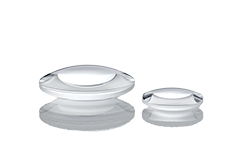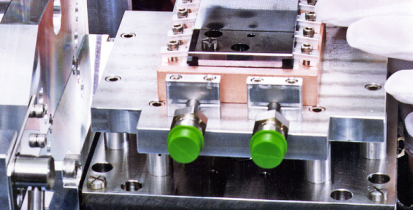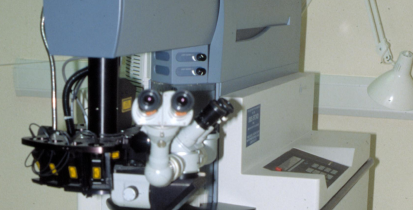

Bespoke Ordering Available
Contact us now
Find out more about our custom lithium fluoride
Call +44 (0)1622 859444 Call +1 401 583 7846
Knight Optical provides high-quality lithium fluoride optical components, including lithium fluoride windows, lenses, and prisms tailored to your specific requirements. Known for its extensive transmission spectrum from the VUV to the IR range, lithium fluoride is especially valued in UV optics due to its profound UV transmission capabilities.
We supply lithium fluoride optics crafted to meet and exceed custom specifications. Our offerings range from uncoated pieces to options with advanced coatings such as broadband antireflective (BBAR) coatings, ensuring optimal performance across various applications.
For those requiring unique solutions, our custom services accommodate virtually any shape or size, incorporating lithium fluoride uses tailored to your project’s specific demands. Our dedication to excellence and customer service ensures that you receive the best lithium fluoride optics price and product available on the market.
For enquiries or more information about our LiF windows and other lithium fluoride products, please contact our technical sales team. We’re here to assist you in selecting the right lithium fluoride optics for your application, backed by our comprehensive testing and quality assurance protocols.

Speak to our experts about your Custom Lithium Fluoride needs today
Call +44 (0)1622 859444 Call +1 401 583 7846Make a quick enquiry about Custom Lithium Fluoride Now
Dive into the forefront of optical solutions. Got questions about an optical product? Reach out now and let our expertise guide you.
Optical Properties of Lithium Fluoride
Lithium fluoride’s properties make it a choice material for specialized applications, including deep UV transmission. Its melting point and refractive index are suited to demanding environments, reinforcing its utility in diverse optical systems. Whether you’re interested in lithium fluoride lens designs, windows, or other optical forms, our inventory addresses a broad spectrum of needs, including those seeking lithium fluoride optical windows with optics stock levels to match.
We understand the importance of affordability without compromising quality. Our in-house metrology lab ensures that each lithium fluoride optic meets quality standards before reaching you.
Below is a brief summary of lithium fluoride’s optical properties, a full data sheet is available here.
| Transmission Range | 0.12 to 6µm |
|---|---|
| Refractive Index | 1.392 @ 0.6µm |
| Density | 2.639 g/cm3 |
| Melting Point | 848°C |
| Hardness | Knoop 102 with 600g indenter |
| Diameter | < 5mm to 100mm + |
|---|---|
| Form error (@633nm) | < 0.25 waves |
| Centration/parallelism | < 1 arc minute |
| Scratch/dig | < 20/10 |
| Typical coatings | BBAR @ 1-6µm, DLC @ 1-6µm |
Frequently Asked Questions
-
What are the primary uses of Lithium Fluoride?
-
Lithium fluoride (LiF) is widely used in optical applications due to its transparency in ultraviolet, visible, and infrared light. It’s commonly found in UV optics like lenses and windows. Moreover, LiF is used in X-ray crystallography and in fluxes for metal smelting.
-
What are the key properties of Lithium Fluoride?
-
Lithium fluoride is known for its excellent UV transmission properties, high resistance to thermal shock, and low refractive index. These properties make LiF valuable for optics and nuclear science applications. Additionally, its melting point is notably high compared to other alkali halides.
-
How do Lithium Fluoride optics compare to other materials?
-
LiF optics, such as lenses and windows, offer exceptional transmission from ultraviolet to mid-infrared wavelengths, outperforming many other materials in UV applications. However, they are more sensitive to moisture and require careful handling.
-
What factors affect the price of Lithium Fluoride?
-
The price of lithium fluoride can vary based on purity, processing costs, demand in the optics industry, and market availability of lithium. Prices may also fluctuate due to technological developments and global market trends.
-
What is the melting point of Lithium Fluoride, and why is it important?
-
Lithium fluoride has a high melting point, making it stable at elevated temperatures, which is crucial for high-temperature applications, such as in thermal imaging systems and in environments where thermal stability is required.
-
How can I find reliable Lithium Fluoride optics stock and price information?
-
For the most current and reliable stock and price information for LiF optics, it’s best to consult directly with suppliers and manufacturers such as Knight Optical. They can provide the latest availability, customisation options, and pricing based on your specific needs.
Is your question not here?
We are ready and waiting to answer any queries you may have about germanium.
Additional Information
Low Refractive Index
Lithium fluoride has the lowest refractive index of the commonly used infrared materials. It also has the most extreme UV transmission of the infrared materials, transmitting beyond the hydrogen Lyman-alpha line at 121nm.
Considerations
Temperature
Though largely insoluble in water, lithium fluoride degrades by atmospheric moisture at around 400°C, whilst in dry conditions it can be used up to 600°C.
Safety
LiF cleaves easily during manufacture, so steep radii can cause surface tearing and damage to the optic. Extreme care needs to be taken. It is sensitive to thermal shock from a rapid change in temperature which can cause cleavage in the material.

Get in touch with us:
With our in-house state-of-the-art metrology laboratory you can be confident that your optical components will meet your requirements. You can find out more about our testing facilities here.

Operating for over 30 years
Knight Optical has been operating for over 30 years, with our managing director Colin Overton at the helm. Over this time, we have become a global leader in the production and distribution of scientific optical components and bringing quality into focus for all of our products and services that we provide.
Our 2022/2023 Catalogue
Inside Knight Optical’s catalogue you’ll find details of the industries we serve as well as the many other services we can offer. It also showcases hundreds of our most popular products, supported by useful technical information, to help you choose the right part for your application.
Click below to view our digital catalogue now.


